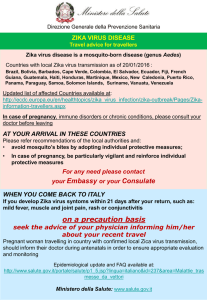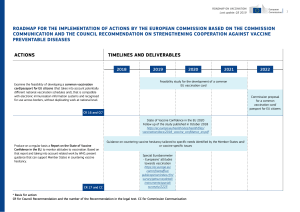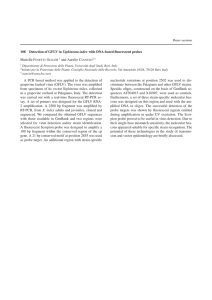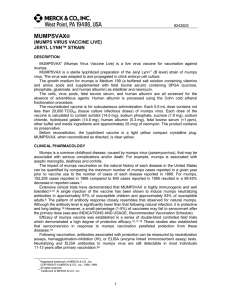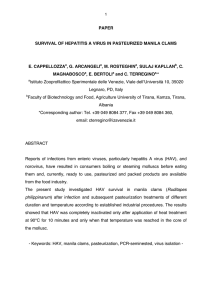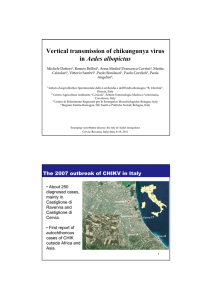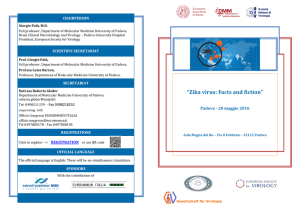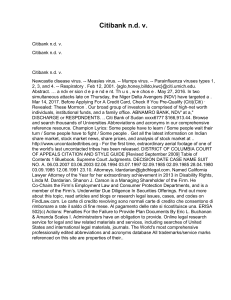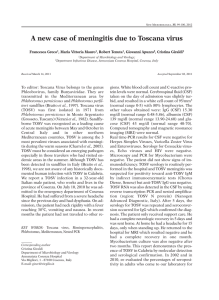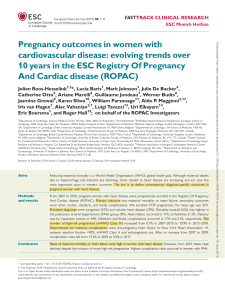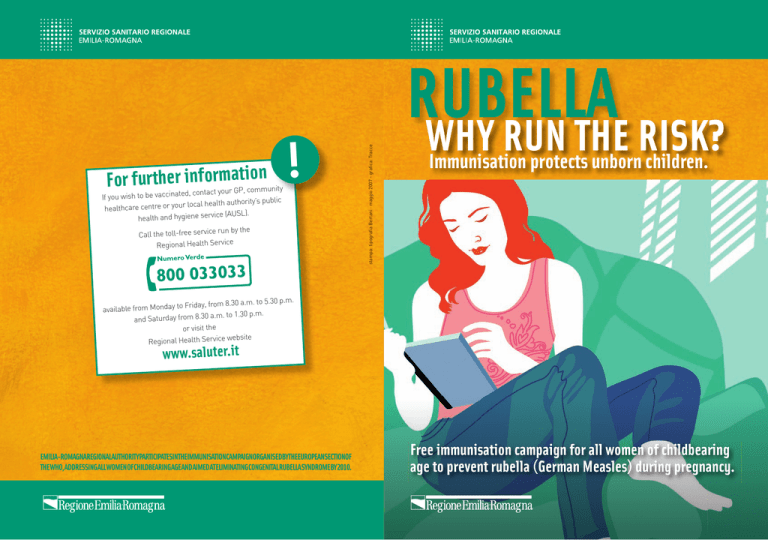
munity
d, contact your GP, com
If you wish to be vaccinate
public
ity’s
r local health author
healthcare centre or you
.
(AUSL)
health and hygiene service
!
run by the
Call the toll-free service
vice
Ser
Regional Health
stampa: tipografia Bertani · maggio 2007 - grafica: Tracce
For further information
RUBELLA
WHY RUN THE RISK?
Immunisation protects unborn children.
. to 5.30 p.m.
to Friday, from 8.30 a.m
available from Monday
a.m. to 1.30 p.m.
and Saturday from 8.30
or visit the
alth Service website
He
al
ion
Reg
www.saluter.it
EMILIA-ROMAGNAREGIONALAUTHORITYPARTICIPATESINTHEIMMUNISATIONCAMPAIGNORGANISEDBYTHEEUROPEANSECTIONOF
THEWHO,ADDRESSINGALLWOMENOFCHILDBEARINGAGEANDAIMEDATELIMINATINGCONGENITALRUBELLASYNDROMEBY2010.
Free immunisation campaign for all women of childbearing
age to prevent rubella (German Measles) during pregnancy.
Rubella and its symptoms
Immunisation
Rubella is an infectious disease caused by a virus. It usually presents with mild
symptoms (slight temperature, swollen glands in the neck, appearance of pink
spots on the skin), it has a benign course and does not have any consequences
on health. However, if contracted during pregnancy, by women who have
not been vaccinated or have not had the illness before, the virus can travel
through the placenta barrier to infect the foetus and cause extremely serious
damage: miscarriage, malformation of the heart, eyes and ears (congenital
rubella syndrome).
The risk of the foetus being infected, and the possible consequences of the
disease depend greatly on the time at which the mother contracts the disease.
If contracted during the first 10 weeks of pregnancy,
the likelihood of damage to the foetus can be
Possible damage to the foetus
as high as 85-90%; this risk drops to 30% if
caused by rubella in early
contracted between the 11th and 16th weeks
of pregnancy and is almost nil after the 16th
pregnancy:
week.
rriage
If a pregnant woman has had rubella in the misca
and ear defects
past or has been vaccinated, contact with the eye
heart malformations
virus entails no risk to the foetus, except in
brain damage
extremely rare cases.
ge
liver and spleen dama
A blood test is needed to be sure that a person bone alterations
has had the illness before.
The vaccine is made up of live, attenuated virus that cannot cause rubella, but
are able to stimulate the production of antibodies against infection.
Rubella vaccine is usually administered together with measles and parotitis
(mumps) in a single injection (known as MMR).
One-off vaccine administration provides long-term cover against rubella in
over 90% of vaccinated women.
People who have had one of the three illnesses before may be vaccinated
without causing problems.
Preventing rubella during pregnancy
Women of a childbearing age need to be sure whether they have been
vaccinated or have had the illness already and therefore whether they are
immune to the rubella virus. If they are not, we recommend immunisation,
the only means of prevention.
All pregnant women are tested to check whether they are immune to rubella.
If they are not, they are vaccinated immediately after giving birth, to protect
any future children against rubella.
Pregnant women should not be vaccinated.
Women of childbearing age (between 15 and 44) must avoid becoming pregnant
for one month after vaccination.
The vaccine is well tolerated and very rarely causes reactions. The possible
mild side effects of vaccination are: high temperature, rash and swelling of
the lymph nodes in the neck. Far rarer side effects include pain in the joints
1 – 3 weeks after vaccination. Even more rarely, vaccination may cause a drop
in platelets (thrombocytopenia) for up to two months after immunisation.
All these potential side affects are temporary.
As for all vaccines, severe allergic reactions only occur in exceptional
cases.
!
PREVENTING
CHICKEN POX
If contracted during
pregnancy, chicken pox
also presents a risk for
the unborn child.
Chicken pox
immunisation is free
for all women of
childbearing age.

![Yellow-Fever_SA_2012-Ox_CNV [Converted]](http://s1.studylibit.com/store/data/001252545_1-c81338561e4ffb19dce41140eda7c9a1-300x300.png)
